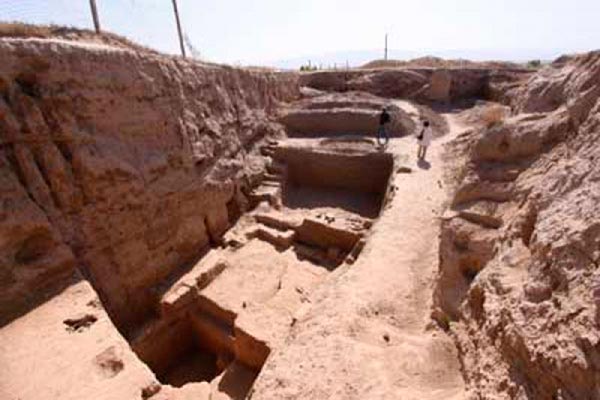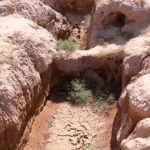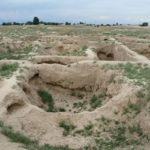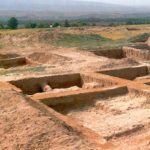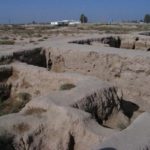This ancient settlement, founded almost in the third millennium BC, is located in a deep valley of the Surkhandarya River. It is believed that the peak of development of the city was during the reign of the Kushan Empire – about 1-4 centuries AD.
The era of prosperity and development
As a result of numerous archaeological investigations it was discovered that the settlement in the era of its economic, social and cultural power was surrounded by impressive fortifications. The thickness of the defensive wall was nearly 10 meters, and length – more than 2kms. In order to create an additional line of defence here a huge moat was dug out.
King Kanishka the First is called by many historians as the main reason for the rapid growth and development of these lands. Many years of social and political stability allowed to actively develop relations not only with other regions, but also countries on the Silk Road that, in turn, contributed to the rapid development of trade, culture and so on. A lot of documented evidence suggests that Kanishka signed documents on cooperation with many developed Empires:
- Roman Empire;
- Han Empire of China;
- Parthian Empire;
Mighty economic and cultural union
Throughout the years of joint existence and conducting of the coherent policy, this “quartet” was able not only to extend their jurisdiction from ocean to ocean, but also to become the undisputed leaders in the region. For example, during this period active functioning of the Silk Road, which connected the Chinese Empire and Syria, happened.
Unlike other empires, whose power was based solely on military power or brutal dictatorship in this alliance their focus was on culture, public freedoms, universal education, and so on. Today archaeologists can present dozens of examples, in which elements of Indian, Chinese and other cultures were encountered in the Kushan culture.
The reason for that was the policy of all the local authorities, which was aimed at achieving peace and harmony between different cultures, social classes and religions. Along the tens of trade routes constantly hundreds of trade caravans and ordinary people who were not feared for their lives or property, would travel towards East or West. Researchers of beliefs say that the maximum spread of Buddhism to these areas coincided with this period.
Start of systematic study of the region
Dalverzintepa came under the attention of many foreign and domestic research groups in about 1967. By this time an area of about fifty hectares had been excavated and studied quite well.
Here, scientists have found many artifacts:
- Sculptures of ancient gods;
- An ancient Temple of the Goddess;
- Diverse wall painting;
- The temple, built in the II-III centuries AD;
- Rural area of these places gave scientists another sanctuary of Buddhism era;
- Numerous plaster sculptures.
Researchers managed to find nearly 30 different historical artifacts whose size ranged from miniature to giant:
- Monuments of Buddha;
- Figurines devoted to Buddhist characters;
- Numerous images of local rulers;
- Statues of bodkhisat.
The beauty and uniqueness of the findings allowed them to promptly end up in museums on both sides of the ocean:
- Switzerland;
- Federal Republic of Germany;
- United States;
- Korea;
- Malaysia;
- Japan and so on.
In the central part of the settlement like in any other large settlement of that period, most wealthy citizens lived. In terms of architectural planning, preference was given to spacious buildings:
- Wide aiwans;
- Spacious ceremonial halls;
- Multiple of household buildings;
- Number of rooms ranged between 2 and 3;
- Special premises existed where valuables were kept. In one of such buildings during the archaeological excavations one of the richest collections of gold coins was discovered. For comparison, this treasure is fully comparable with the famous Amu Darya treasure.
As a result of multiple excavations in the region a wide variety of artifacts was discovered:
- Household items made of ivory;
- Numerous chess figurines related to 1 or 2 century AD;
- Objects made of polished stone;
- Various women’s jewelery;
- Numerous figurines of musicians found on these lands, allow us to make some conclusions about the musical preferences of the inhabitants of that distant epoch;
- Ceramic items with thin walls, belonging to the Greco-Bactrian period.
Cultural and ethnic studies conducted in these areas, say that here happened a creative processing of different customs, styles and trends prevailing in the territories where the Silk Road passed.








